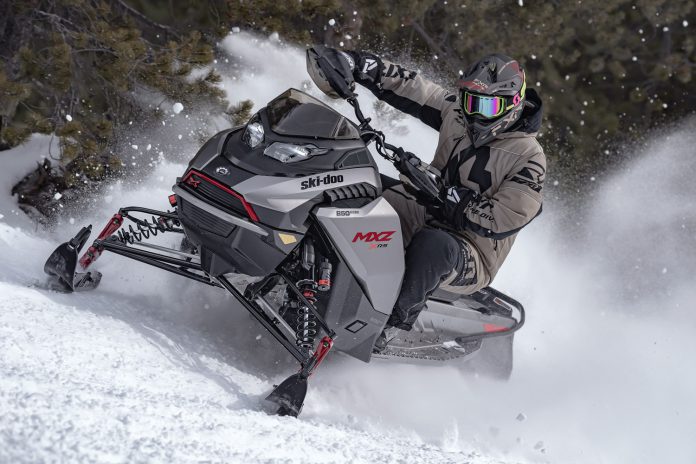To say the snowmobile business has changed over the past two-and-a-half years would be a huge understatement.
Entering model year 2023, the industry is selling oh-so-close to 100-percent current model year sleds. This means the OEMs have not been “carrying” unsold past models all summer. In fact, in a number of situations OEMs are unable to meet consumer demand for 2023 sleds.
Last spring’s early order programs were categorically the most successful programs of this type ever run by the manufacturers. Essentially, model year 2023 was sold out in a matter of days. Yes, the OEMs are building some 2023 sleds for in-season sale, however, that number is – as we’ve been told – relatively small. Factor in this stunning reality: There are literally no non-current (MY 2022 and older) snowmobiles lying around at the factories or at dealers.
Consider how good this is for the four sled-makers. They are building an enormous percentage of their current 2023 sleds for an end user with a name and address. The sleds are deposit-paid and when they arrive at their respective dealerships they get paid in full by you. No, or very little, messy and expensive wholesale financing costs are required. No carry-over costs for 2022’s either.
The specter of wholesale financing is a costly, much maligned and genuinely disliked part of the retail snowmobile business. It is a cost that’s been built into the actual manufacturing and marketing budgets of the OEMs for decades. However, not anymore. Or at least not this year.
It’s no secret to any of us that the COVID lockdown induced “stay in your own country” mentality the past two years has created demand for all kinds of luxury items. Here’s a weird one: The hot tub industry has not been able to meet demand for hot tubs. People couldn’t go on their warm weather vaycays so they upgraded their homes with stuff like, you guessed it… hot tubs.
The powersport industry as a whole has been under the same sort of never-seen-before demand for snowmobiles, ATVs, SxS, motorcycles, boats, RVs, motorhomes and more. People work to play and when the lockdowns took away some of our freedom, people responded with the highest demand the industry has ever seen for new product.
The big question is this: Is this sustainable? More succinctly, can this go on for another year or years? It is a great question and as yet it cannot be answered.
The very first issue going forward is an age-old one. Many OEMs in this industry ran their businesses on the principle of overbuilding every year. In other words, build more than you can sell this year and allow some crates to stack up at the factory and at dealers. Wholesale financing costs of carrying these past models ahead for a year was mostly covered by the manufacturers who would then load up dealers with a mixture of non-current and current sleds at the annual dealer show.
This kind of approach to selling all powersports vehicles was entrenched in the industry. It was the way things operated. Now, as a result of COVID, the OEMs are openly expressing it’s a new day in the business and that it doesn’t have to go back to the old model if all four of them can resist the temptation to overbuild.
However, there is a fly in the ointment: Inflation and the predicted arrival of an economic recession. If the economy slides backward to a minimal degree the business’s excellent demographic profile is strong enough to sustain the good times. However, if there is a serious recession in the free world it may mean the OEM’s and dealers could be forced to carry (wholesale finance) more unsold sleds in inventory and go back to the old model.
There are other significant forces at play here as well. Is it possible the amazing spike in sled interest might slow as people go back to spending their money on fair weather vacations and other recreational activities? Dunno for sure.
I mentioned that our demography is a significant contributor to the success the snowmobile biz has and is still enjoying. Snowmobilers are avid and committed to this winter recreation. Overall they have the money to participate in the sport at a very high level.
Another distinctive is the high percentage of self-employed participants. It’s a great place to do business because of the relative financial strength of the snowmobiling public.
If I did not answer your specific questions here it’s because this whole situation is largely moving in uncharted waters. I can’t, and a surprisingly large number of industry participants cannot definitively say what’s next.



